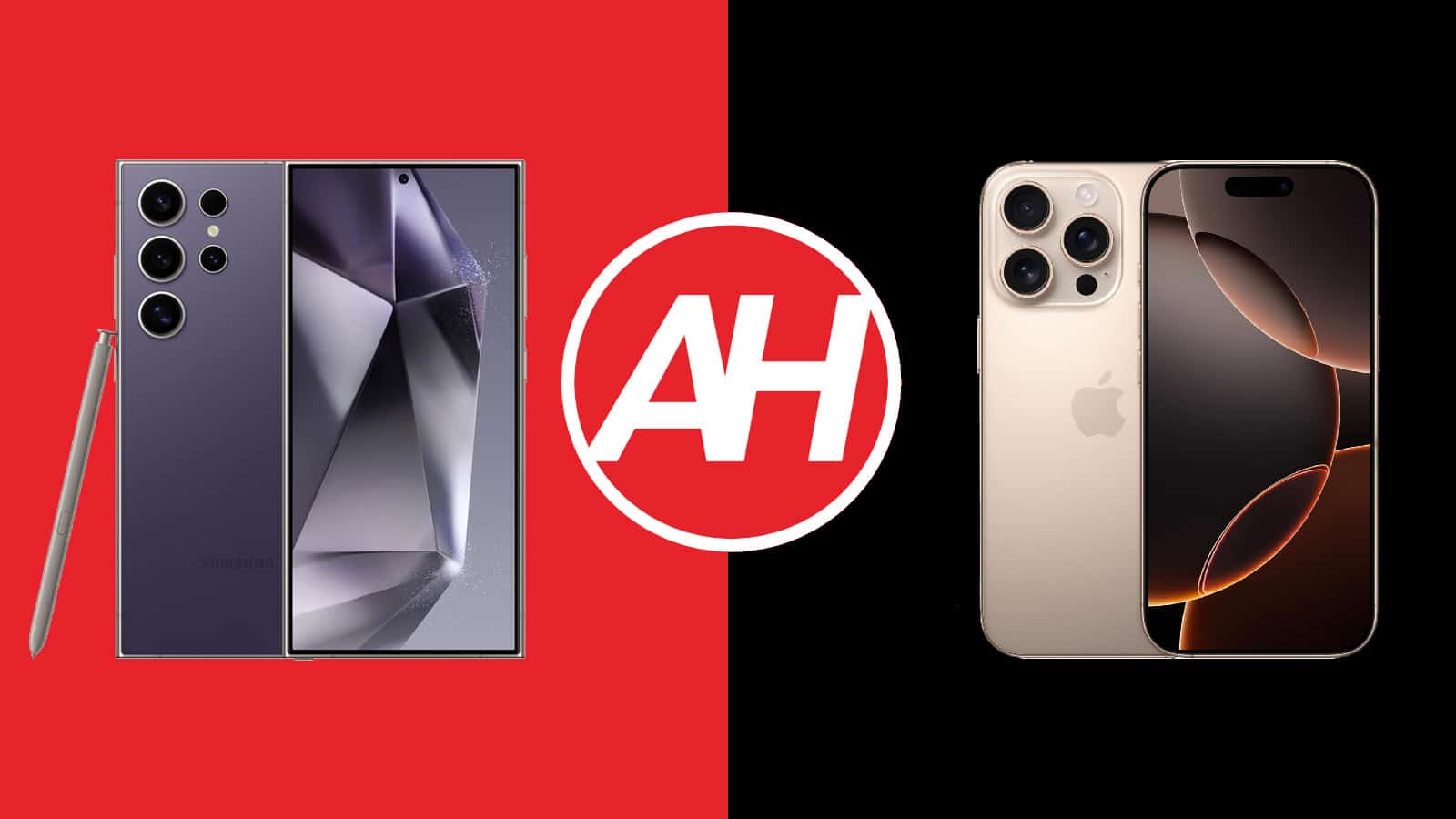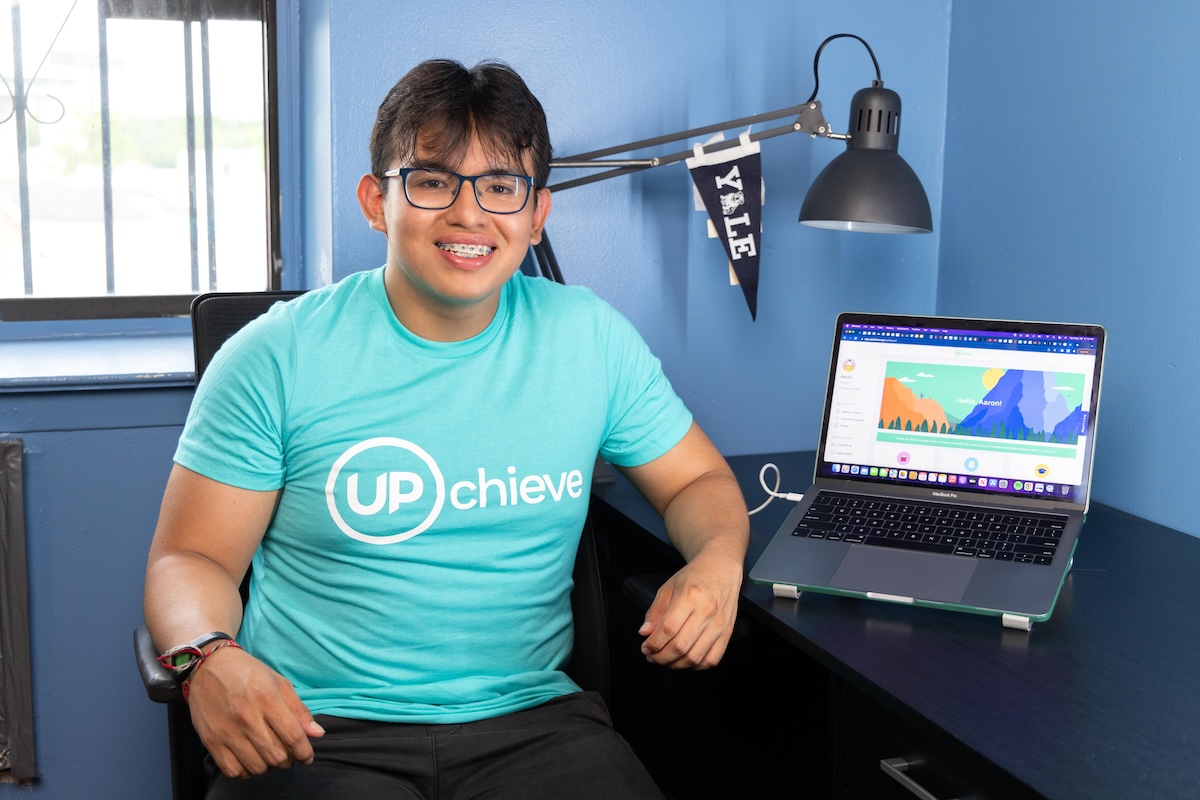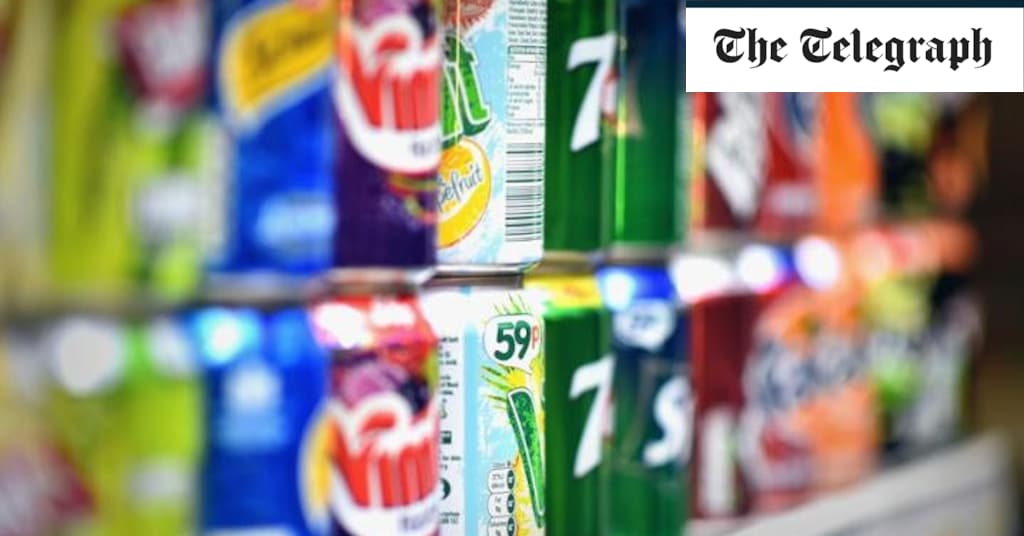Technology
Samsung Galaxy S24 Ultra vs Apple iPhone 16 Pro Max

Apple has recently announced its new flagship smartphones, including the iPhone 16 Pro Max, the largest one. In this article, we’ll compare it to the best Samsung has to offer, the Samsung Galaxy S24 Ultra vs Apple iPhone 16 Pro Max. These two devices are quite different when it comes to design, but that’s not where the similarities end, not at all, quite the contrary, actually. There is plenty to talk about here.
As we usually do, we will first list the specifications of both smartphones and will then move to compare them across a number of other categories. We will compare their designs, displays, performance, battery life, cameras, and audio output. There are quite a few differences to talk about here, as the two companies have completely different approaches. Let’s get down to it, shall we?
Specs
Samsung Galaxy S24 Ultra vs Apple iPhone 16 Pro Max, respectively
– Screen size:
6.9-inch Dynamic AMOLED 2X (flat, adaptive 120Hz, HDR10+, 2,600 nits max brightness)
6.9-inch LTPO Super Retina XDR OLED ( flat, 120Hz, HDR, 2,000 nits)
– Display resolution:
3120 x 1440
2868 x 1320
– SoC:
Qualcomm Snapdragon 8 Gen 3 for Galaxy (4nm)
Apple A18 Pro (3nm)
– RAM:
12GB (LPDDR5X)
16GB (LPDDR5X)
– Storage:
256GB/512GB/1TB (UFS 4.0)
128GB/256GB/512GB/1TB (UFS 3.1)
– Rear cameras:
200MP (wide, f/1.7 aperture, OIS, multi-directional PDAF, 0.6um pixel size), 12MP (ultrawide, 120-degree FoV, f/2.2 aperture, Dual Pixel PDAF 1.4um pixel size), 10MP (telephoto, f/2.4 aperture, OIS, Dual Pixel PDAF, 1.12um pixel size, 3x optical zoom), 50MP (periscope telephoto, OIS, PDAF, 5x optical zoom)
48MP (wide, f/1.8 aperture, 1/1.28-inch sensor, 1.22um pixel size, sensor-shift OIS), 48MP (ultrawide, f/2.2 aperture, 0.7um pixel size, PDAF), 12MP (periscope telephoto, f/2.8 aperture, 1/3.06-inch sensor, 1.12um pixel size, 3D sensor-shift OIS, 5x optical zoom).
– Front cameras:
12MP (wide, f/2.2 aperture, Dual Pixel PDAF, 22mm lens)
12MP (f/1.9 aperture, PDAF, 1/3.6-inch sensor size, OIS)
– Battery:
5,000mAh
Not confirmed yet
– Charging:
45W wired, 15W wireless, 4.5W reverse wireless (charger not included)
38W wired & 25W MagSafe & Qi2 wireless, 7.5W Qi wireless, 5W reverse wired
– Dimensions:
162.3 x 79 x 8.6mm
163 x 77.6 x 8.3 mm
– Weight:
232/233 grams
227 grams
– Connectivity:
5G, LTE, NFC, Wi-Fi, USB Type-C, Bluetooth 5.3
– Security:
Ultrasonic in-display fingerprint scanner & facial scanning
Face ID (3D facial scanning)
– OS:
Android 14 with One UI 6.1
iOS 18
– Price:
$1,299+
$1,199+
– Buy:
Samsung Galaxy S24 Ultra (Best Buy)
Apple iPhone 16 Pro Max
Samsung Galaxy S24 Ultra vs Apple iPhone 16 Pro Max: Design
The moment you lay your eyes on the two phones you’ll realize how different they are. The Galaxy S24 Ultra has a flat top and bottom sides, but its left and right sides are curved. All sides of the iPhone 16 Pro Max are flat, though they are slightly rounded toward the edges. Apple did that so that the phone is more comfortable to hold. Both phones do include flat displays with cutouts on them. The Galaxy S24 Ultra has a little hole at the top of the display, while the iPhone 16 Pro Max has a rather large pill-shaped cutout.
The bezels around their displays are very thin, and uniform. All the physical buttons sit on the right-hand side of the Galaxy S24 Ultra. The iPhone 16 Pro Max has a power/lock key there and a Camera Control button. On the left, you’ll find the volume up and down buttons, and the Action Button. The two devices have considerably different camera setups on the back. Each of the Galaxy S24 Ultra’s four cameras protrudes directly from the back side. There is no dedicated camera island. The exact opposite is true for the iPhone 16 Pro Max. Its camera island sits in the top-left corner with three cameras.
Both of these phones are made out of titanium and glass. They have a titanium frame. They are both also IP68 certified for water and dust resistance. Corning’s Gorilla Armor sits on the back of Samsung’s handset. Apple’s device has a “Corning-made glass” on the back. The two phones are almost the same in terms of height, while the Galaxy S24 Ultra is slightly wider. They are almost identical in terms of thickness. Both phones are quite slippery, and the Galaxy S24 Ultra is 5 grams heavier.
Samsung Galaxy S24 Ultra vs Apple iPhone 16 Pro Max: Display
The Galaxy S24 Ultra feautres a 6.8-inch QHD+ 3120 x 1440 Dynamic LTPO AMOLED 2X display. That panel has an adaptive refresh rate of up to 120Hz. It also offers support for HDR10+ content, and its peak brightness is at 2,600 nits. The screen-to-body ratio is around 88%, while the display aspect ratio is 19.5:9. The Gorilla Armor from Corning sits on top of the display in order to protect it.

The iPhone 16 Pro Max, on the flip side, has a 6.9-inch LTPO Super Retina XDR OLED display. That display has an adaptive refresh rate of up to 120Hz. HDR10 is supported, as is Dolby Vision. The peak brightness here is 2,000 nits. The screen-to-body ratio on the iPhone 16 Pro Max is around 91%. The display aspect ratio is 19.5:9. This display is protected by the Ceramic Shield glass.
Both of these panels are great. They are vivid, bright, and have great viewing angles. The blacks are deep, and the touch response is good. Neither phone has high-frequency PWM dimming, though. The Galaxy S24 Ultra does technically get brighter, but the difference is not that big, not even in direct sunlight. What the Galaxy S24 Ultra does have an advantage with is… glare. The Gorilla Armor on top of the display is unbelievable in that regard.
Samsung Galaxy S24 Ultra vs Apple iPhone 16 Pro Max: Performance
The Snapdragon 8 Gen 3 for Galaxy fuels the Galaxy S24 Ultra. That is a 4nm chip and Qualcomm’s best one at the time of writing this. The phone is also equipped with 12GB of LPDDR5X RAM and UFS 4.0 flash storage. The iPhone 16 Pro Max is fueled by the Apple A18 Pro processor. That is a 3nm chip, by the way. The phone is also equipped with 8GB of RAM and NVMe flash storage. Neither phone offers expandable storage, by the way.
With that being said, both phones do offer great performance. Our iPhone 16 Pro (Max) review is not ready yet, but plenty of impressions are already there. In any case, both devices are very fluid in terms of day-to-day use. They can jump between apps without a problem, and getting them to slow down is a chore. They do great regardless of what you’re doing, even when it comes to a bit more advanced things such as video processing.
What about gaming, though? Well, they’re great in that regard too. Non-demanding games are, of course, not a problem, but the same goes for truly demanding titles too. Each of these two smartphones can run basically anything you can think of, and do it really well. Titles like Genshin Impact are not a problem at all. They will get warm, but not too much, and that won’t affect the gaming performance at all.
Samsung Galaxy S24 Ultra vs Apple iPhone 16 Pro Max: Battery
There is a 5,000mAh battery included inside the Galaxy S24 Ultra. Apple still didn’t confirm what battery it used in the iPhone 16 Pro Max, though. It is tipped to be a 4,676mAh unit, but we’re still not 100% sure. Apple’s handsets usually have smaller batteries compared to their Android counterparts, due to the way iOS operates, but that doesn’t mean they have inferior battery life. In fact, both of these smartphones are outstanding in that regard.
We were in awe of the Galaxy S24 Ultra’s battery life when we first reviewed it. The iPhone 16 Pro Max is showing a similar promise, actually. Getting to over 7-8 hours of screen-on-time is a possibility on both phones, though your mileage may vary, of course. That will depend on a number of factors. The point is, we were unable to drain the battery life of either phone in a day. We could have done that with constant gaming, of course, but with general heavy use, no… that didn’t happen.
What about charging? Well, the Galaxy S24 Ultra supports 45W wired, 15W wireless, and 4.5W reverse wireless charging. The iPhone 16 Pro Max, on the other hand, supports 45W wired, 25W MagSafe wireless, 15W Qi2 wireless, 7.5W Qi wireless, and 5W reverse wired charging. Do note that neither smartphone comes with a charger in the retail box, however. All you’ll get is a cable.
Samsung Galaxy S24 Ultra vs Apple iPhone 16 Pro Max: Cameras
The Samsung Galaxy S24 Ultra comes with four cameras on the back, while Apple’s handset has three rear cameras. The Galaxy S24 Ultra includes a 200-megapixel main camera, a 12-megapixel ultrawide unit (120-degree FoV), a 10-megapixel telephoto unit (3x optical zoom), and a 50-megapixel periscope telephoto camera (5x optical zoom). The iPhone 16 Pro Max, on the other hand, has a 48-megapixel main camera, a 48-megapixel ultrawide unit, and a 12-megapixel periscope telephoto camera (5x optical zoom).

The main camera sensors on the two phones are similar in terms of size. Both devices do a really good job with photos, though the results are different. Samsung’s images still look more processed, although Apple has been heading more and more in that direction. Both phones like brightening up the shadows during the day, even though the Galaxy S24 Ultra’s images do end up looking a bit more contrasty. The iPhone 16 Pro Max was more reliable for us in terms of balanced photos, for what it’s worth, but the Galaxy S24 Ultra was not far off.
Both ultrawide cameras do a good job, and keep a similar color profile to the main shooters. The results are notably different, though, as are with the main cameras. Something similar can be said for the telephoto cameras. This was a tossup between the two setups, as it all depended on what distance we were capturing. At times we preferred shots from the iPhone, but it was mostly from Samsung. Both devices also do a good job in low light and love to brighten up scenes, though Samsung more than Apple. That goes for all three cameras, by the way. The iPhone 16 Pro Max easily wins the video comparison.
Audio
Both of these smartphones include stereo speakers, and they’re really good on both ends. They’re loud enough, and the sound output is detailed enough. We did not notice noticeable distortion or anything like that.
There is no audio jack on either phone, but you can use their Type-C ports to connect your wired headphones. Alternatively, Bluetooth 5.3 is on offer for wireless audio connections… on both smartphones.
Science & Environment
Climate change is making days longer, according to new research

Climate change is making days longer, as the melting of glaciers and polar ice sheets causes water to move closer to the equator, fattening the planet and slowing its rotation, according to a recent study.
Research published in the Proceedings of the National Academy of Sciences used both observations and reconstructions to track variations of mass at Earth’s surface since 1900.
In the 20th century, researchers found that between 0.3 milliseconds per century and 1 millisecond per century were added to the length of a day by climate-induced increases. Since 2000, they found that number accelerated to 1.3 milliseconds per century.
“We can see our impact as humans on the whole Earth system, not just locally, like the rise in temperature, but really fundamentally, altering how it moves in space and rotates,” Benedikt Soja of ETH Zurich in Switzerland told Britain’s Guardian newspaper. “Due to our carbon emissions, we have done this in just 100 or 200 years, whereas the governing processes previously had been going on for billions of years. And that is striking.”
Researchers said that, under high greenhouse gas emission scenarios, the climate-induced increase in the length of a day will continue to grow and could reach a rate twice as large as the present one. This could have implications for a number of technologies humans rely on, like navigation.
“All the data centers that run the internet, communications and financial transactions, they are based on precise timing,” Soja said. “We also need a precise knowledge of time for navigation, and particularly for satellites and spacecraft.”
Technology
Google’s NotebookLM evolves: What IT leaders need to know about its enterprise applications

Join our daily and weekly newsletters for the latest updates and exclusive content on industry-leading AI coverage. Learn More
Google’s research tool NotebookLM made waves recently for a new feature that lets users generate what sounds a lot like podcasts. But while the company has been adding new features, it’s also seeing more and more use cases in the enterprise arena.
NotebookLM lets users upload PDFs, websites, Google Docs, Google Slides and paste text into a notebook keeping information in one place. People can also ask Gemini questions about the documents inside the notebook. First launched in July 2023 and generally available in the U.S. since Dec. 2023, NotebookLM has slowly expanded the kinds of files it can read.
However, one use case that has seen an uptick is through corporate teams sharing research and information on NotebookLM.
Raiza Martin, product manager at Google handling NotebookLM, told VentureBeat that they’re seeing corporate teams take advantage of the product’s organizational capabilities that let people find the information they need in one place.
“We saw students using it to accelerate their learning and understanding and analysis, but we also know that the same thing students are doing is the exact same things that professionals are trying to do,” Martin said, adding that over months, Google has seen “an equal, if not larger amount of professionals using NotebookLM.”
Make a podcast to explain your research
Since launching NotebookLM, Google has slowly added new capabilities to the platform. The newest update allows users to generate audio explaining information in the notebook, with two speakers discussing the topic.
“The conversation style is the first one that we picked because we thought it was novel, and in our early test, it was very engaging. The double speaker dynamic helped people sort of latch on to the content in a totally different way than a single speaker,” Martin said.
Google observed users and teams have used NotebookLM to bring together research and analysis, even some other information employees may need to know. One way enterprises can use NotebookLM is as a shortcut to store data that ultimately makes its way to retrieval augmented generative (RAG) search queries. Martin said NotebookLM itself is a RAG tool that benefits from Google’s Gemini 1.5 Pro.
I got to use the audio generation feature early and was able to point it to one of my notebooks. I had given NotebookLM several documents about global AI regulations, such as the text of the European Union’s AI Act. The audio it generated summarized the act, but since the other file in the same notebook was an analytical blog post, the discussion took sides. To me, it sounded a lot like the tech-related podcasts I regularly listen to, without the personal banter between hosts.
Some users have begun posting how they’ve used the audio feature, including explaining code bases.
It can be used to summarize blog posts as well.
“This is the first of many formats, but in the future, we’ll give you knobs so you can change the number of speakers, the types of voices used and the content altogether,” said Martin.
Different use cases for NotebookLM
Part of the growth of NotebookLM has been users exploring different use cases for it, and Martin said it means it’s usually up to users to figure out how to make it work for them. Some use cases have been very interesting, including a Dungeons and Dragons dungeon master using it to keep track of a campaign.
“I think there’s still a lot of education in terms of connecting users on how to use the tool and why this type of tool might be valuable, but I would say that I’m really encouraged by the rate at which people are seeing that value and have used NotebookLM,” Martin said.
Martin said NotebookLM will remain, for now, a standalone tool. However, some of the learnings from the tool could make their way to other Google productivity platforms.
Source link
Science & Environment
The Buck Moon is almost here. Here’s when and where to see July’s full moon.

The next full moon is arriving just in time for the weekend. According to NASA, the Buck Moon will make an appearance for three days, from Friday evening to Monday morning, reaching its peak at 6:17 a.m. EDT on Sunday.
The moon is also known as the Thunder Moon, given its overlap with thunderstorm season.
NASA advised viewers to stay safe from the lightning that comes with the storms, but also to indulge in a little fun as the Buck Moon arrives: “As usual, the wearing of suitably celebratory celestial attire is encouraged in honor of the full Moon.”
Why is it called the Buck Moon?
The name stems from a tradition established by the Maine Farmers’ Almanac in the 1930s, according to NASA, when the publication started listing the names of full moons. The Algonquin tribes of the Northeast reportedly called this month’s moon the Buck Moon – a nod to the deer that emerge this time of year.
“Early summer is normally when the new antlers of buck deer push out of their foreheads in coatings of velvety fur,” NASA said.
Other monikers for July’s full moon include Thunder Moon, Asalha Puja, Guru Full Moon, Hay Moon. and Mead Moon.
When will the next full moon take place?
August’s full moon — known as the Sturgeon Moon, according to the almanac.com — will peak on Monday, Aug. 19. This will be the first supermoon of the year, which means it will appear brighter and larger than other full moons.
Another event for stargazers to look forward to is a meteor shower on Saturday, July 31. Those on the East Coast will have to rise early if they want to catch the spectacle of light. According to NASA, the best time to see the shower from Washington, D.C., will be around 2 a.m.
Technology
UPchieve, an online tutor app for low-income students, launches a free tool for teachers

UPchieve, the free, 24/7 online tutoring and college counseling app for low-income students, announced Thursday it’s giving teachers in Title 1 middle schools and high schools a new tool to ensure their students get the academic support they need.
The new offering, called “UPchieve for Teachers,” allows teachers to offer 1:1 support to their students. They can invite students to sign up for tutoring, create classes, and monitor students’ platform usage. Previously, students had to sign up for tutoring services themselves, but with this new product, teachers can now recommend students for 1:1 tutoring at no cost. In the coming weeks, they’ll also be able to assign tutoring sessions to entire classes.
UPchieve for Teachers is available to educators working in Title 1 middle schools and high schools. Title 1 is a federal aid program provided to K-12 schools with the highest number of low-income families within school districts. Approximately 43% of public schools qualify for Title I funding, with fewer than 50,000 schools benefiting from the program.
This new offering is expected to help UPchieve expand its user base by reaching students who may not be aware of free services like this or who may not be actively seeking additional assistance.
“The product is going to be really valuable to teachers because it’s going to help them accomplish some of the hardest parts of their job,” founder Aly Murray told TechCrunch. “Students are coming into the class with different gaps in their foundational skills. Teachers have to try to support all of their students, but there’s not enough time to support each student individually, so that’s a natural place where a tutor can help. We’re really excited about launching a product that’s going to give teachers more control.”

UPchieve was founded in 2016, shortly after Murray graduated from the University of Pennsylvania. As a former low-income student herself, she struggled to access academic support services throughout her schooling and wanted to make it easy for other students to be able to get help whenever they needed it, even when working on homework late at night.
“I was raised by a single mom, and as an immigrant to the United States, she often wasn’t able to help me with schoolwork and with my college applications. And so that had a big impact on my life. It made things very difficult, and I found that I often needed help late at night when there was really nowhere I could turn to for support,” Murray said.
UPchieve says it has matched over 190,000 tutoring requests from more than 20,000 students across all 50 states. Its 24/7 online tutoring sessions are conducted in the in-app messenger or via voice chat on the web or mobile app. UPchieve covers over 30 subjects, including math, science, English, history, humanities, and more.
Tutors can volunteer by signing up on the website. Volunteers can even be students themselves; however, they must be in 9th grade or higher. UPchieve currently has around 2,400 tutors active on the platform.
“All of the volunteers on UPchieve go through a background screening, training, and certification process to become a volunteer tutor. Before they’re ever going to work with a student, they have to pass a quiz in every subject that they want to help students with,” Murray explained.

Similar to other edtech companies, the company utilizes OpenAI’s GPT-4o to assist tutors in providing AI-generated feedback and progress reports to students after the sessions are over. In the future, the company also plans to use AI to help tutors create practice problems and offer AI-generated summaries of student sessions through its Teachers product.
“We have no plans to replace our human tutors with AI tutors anytime in the near future,” Murray added.
As a nonprofit organization, UPchieve relies on charitable donations, grants, and paid partnerships with schools, districts, and corporations. Donors include Atlassian, AT&T, the Bill & Melinda Gates Foundation, Guggenheim Capital, Goldman Sachs, J.P. Morgan, the Skyline Foundation, and Verizon.
UPchieve has partnered with over 50 schools, and each school or organization pays a $10,000 partnership fee per year or is sponsored by a donor or corporation who pays the fee on their behalf. The company also graduated from Y Combinator’s Winter 2021 batch.
In 2023, UPchieve raised over $4 million through philanthropy and earned revenue from paid partnerships. The company claims its annual recurring revenue (ARR) is currently $840,000, which comes solely from paid and sponsored partnerships.
Science & Environment
Secrets of the elephant – CBS News

Watch CBS News
Be the first to know
Get browser notifications for breaking news, live events, and exclusive reporting.
Technology
Netflix adds Civilization 6 and Street Fighter 4 to its games lineup

Netflix’s newest games are actually a bit old. During its Geeked Week 2024 presentation, the streaming service revealed it’s adding Civilization VI and Street Fighter IV: Champion Edition as well as a host of other titles to its ever-increasing and legitimately impressive gaming lineup.
For Civ 6, players will have access to all the game’s expansion packs that were a part of the Platinum Edition version of the game. Meanwhile, Netflix will host the Champion Edition of Street Fighter IV featuring all 32 fighters released over the game’s lifetime. Also, iOS and Android users will be able to compete against each other online exclusively via Netflix. Neither game has a launch date just yet, with Netflix saying both are coming soon.
Street Fighter and Civilization will join the other games announced for the platform, including Don’t Starve Together, Stardew Valley-with-Hobbits simulator Tales of the Shire, Lab Rat, Carmen Sandiego, Monument Valley, Spongebob Bubble Pop F.U.N., and Battleship.
-

 Sport12 hours ago
Sport12 hours agoJoshua vs Dubois: Chris Eubank Jr says ‘AJ’ could beat Tyson Fury and any other heavyweight in the world
-

 News1 day ago
News1 day agoYou’re a Hypocrite, And So Am I
-

 News13 hours ago
News13 hours agoIsrael strikes Lebanese targets as Hizbollah chief warns of ‘red lines’ crossed
-

 Sport12 hours ago
Sport12 hours agoUFC Edmonton fight card revealed, including Brandon Moreno vs. Amir Albazi headliner
-

 Technology11 hours ago
Technology11 hours agoiPhone 15 Pro Max Camera Review: Depth and Reach
-

 Science & Environment15 hours ago
Science & Environment15 hours agoHow one theory ties together everything we know about the universe
-

 Science & Environment23 hours ago
Science & Environment23 hours agoSunlight-trapping device can generate temperatures over 1000°C
-

 News10 hours ago
News10 hours agoBrian Tyree Henry on voicing young Megatron, his love for villain roles
-

 Science & Environment1 day ago
Science & Environment1 day agoQuantum time travel: The experiment to ‘send a particle into the past’
-

 CryptoCurrency12 hours ago
CryptoCurrency12 hours ago2 auditors miss $27M Penpie flaw, Pythia’s ‘claim rewards’ bug: Crypto-Sec
-

 CryptoCurrency12 hours ago
CryptoCurrency12 hours agoBitcoin miners steamrolled after electricity thefts, exchange ‘closure’ scam: Asia Express
-

 CryptoCurrency12 hours ago
CryptoCurrency12 hours agoCardano founder to meet Argentina president Javier Milei
-

 CryptoCurrency12 hours ago
CryptoCurrency12 hours agoDorsey’s ‘marketplace of algorithms’ could fix social media… so why hasn’t it?
-

 CryptoCurrency12 hours ago
CryptoCurrency12 hours agoLow users, sex predators kill Korean metaverses, 3AC sues Terra: Asia Express
-
Business11 hours ago
How Labour donor’s largesse tarnished government’s squeaky clean image
-

 Science & Environment15 hours ago
Science & Environment15 hours ago‘Running of the bulls’ festival crowds move like charged particles
-
News12 hours ago
Freed Between the Lines: Banned Books Week
-

 MMA12 hours ago
MMA12 hours agoUFC’s Cory Sandhagen says Deiveson Figueiredo turned down fight offer
-

 CryptoCurrency11 hours ago
CryptoCurrency11 hours agoEthereum is a 'contrarian bet' into 2025, says Bitwise exec
-

 Science & Environment15 hours ago
Science & Environment15 hours agoRethinking space and time could let us do away with dark matter
-

 Science & Environment12 hours ago
Science & Environment12 hours agoWe may have spotted a parallel universe going backwards in time
-

 CryptoCurrency12 hours ago
CryptoCurrency12 hours agoArthur Hayes’ ‘sub $50K’ Bitcoin call, Mt. Gox CEO’s new exchange, and more: Hodler’s Digest, Sept. 1 – 7
-

 CryptoCurrency12 hours ago
CryptoCurrency12 hours agoTreason in Taiwan paid in Tether, East’s crypto exchange resurgence: Asia Express
-

 CryptoCurrency12 hours ago
CryptoCurrency12 hours agoLeaked Chainalysis video suggests Monero transactions may be traceable
-

 CryptoCurrency12 hours ago
CryptoCurrency12 hours agoJourneys: Robby Yung on Animoca’s Web3 investments, TON and the Mocaverse
-

 CryptoCurrency12 hours ago
CryptoCurrency12 hours agoLouisiana takes first crypto payment over Bitcoin Lightning
-

 CryptoCurrency12 hours ago
CryptoCurrency12 hours agoAre there ‘too many’ blockchains for gaming? Sui’s randomness feature: Web3 Gamer
-

 CryptoCurrency12 hours ago
CryptoCurrency12 hours agoCrypto whales like Humpy are gaming DAO votes — but there are solutions
-

 CryptoCurrency12 hours ago
CryptoCurrency12 hours agoHelp! My parents are addicted to Pi Network crypto tapper
-

 CryptoCurrency12 hours ago
CryptoCurrency12 hours ago$12.1M fraud suspect with ‘new face’ arrested, crypto scam boiler rooms busted: Asia Express
-

 CryptoCurrency12 hours ago
CryptoCurrency12 hours ago‘Everything feels like it’s going to shit’: Peter McCormack reveals new podcast
-

 Science & Environment15 hours ago
Science & Environment15 hours agoFuture of fusion: How the UK’s JET reactor paved the way for ITER
-

 CryptoCurrency12 hours ago
CryptoCurrency12 hours agoSEC sues ‘fake’ crypto exchanges in first action on pig butchering scams
-

 CryptoCurrency12 hours ago
CryptoCurrency12 hours agoFed rate cut may be politically motivated, will increase inflation: Arthur Hayes
-

 CryptoCurrency12 hours ago
CryptoCurrency12 hours agoDecentraland X account hacked, phishing scam targets MANA airdrop
-

 CryptoCurrency12 hours ago
CryptoCurrency12 hours agoCZ and Binance face new lawsuit, RFK Jr suspends campaign, and more: Hodler’s Digest Aug. 18 – 24
-

 CryptoCurrency12 hours ago
CryptoCurrency12 hours agoCertiK Ventures discloses $45M investment plan to boost Web3
-

 CryptoCurrency12 hours ago
CryptoCurrency12 hours agoMemecoins not the ‘right move’ for celebs, but DApps might be — Skale Labs CMO
-

 CryptoCurrency12 hours ago
CryptoCurrency12 hours agoTelegram bot Banana Gun’s users drained of over $1.9M
-

 CryptoCurrency12 hours ago
CryptoCurrency12 hours agoDZ Bank partners with Boerse Stuttgart for crypto trading
-

 CryptoCurrency12 hours ago
CryptoCurrency12 hours agoRedStone integrates first oracle price feeds on TON blockchain
-

 CryptoCurrency12 hours ago
CryptoCurrency12 hours agoBitcoin bulls target $64K BTC price hurdle as US stocks eye new record
-

 CryptoCurrency12 hours ago
CryptoCurrency12 hours agoSEC asks court for four months to produce documents for Coinbase
-

 CryptoCurrency12 hours ago
CryptoCurrency12 hours ago‘No matter how bad it gets, there’s a lot going on with NFTs’: 24 Hours of Art, NFT Creator
-

 CryptoCurrency12 hours ago
CryptoCurrency12 hours agoBlockdaemon mulls 2026 IPO: Report
-
Business12 hours ago
Thames Water seeks extension on debt terms to avoid renationalisation
-
Politics12 hours ago
The Guardian view on 10 Downing Street: Labour risks losing the plot | Editorial
-

 Politics11 hours ago
Politics11 hours agoI’m in control, says Keir Starmer after Sue Gray pay leaks
-
Politics11 hours ago
‘Appalling’ rows over Sue Gray must stop, senior ministers say | Sue Gray
-
Business11 hours ago
UK hospitals with potentially dangerous concrete to be redeveloped
-
Business10 hours ago
Axel Springer top team close to making eight times their money in KKR deal
-

 News10 hours ago
News10 hours ago“Beast Games” contestants sue MrBeast’s production company over “chronic mistreatment”
-

 News10 hours ago
News10 hours agoSean “Diddy” Combs denied bail again in federal sex trafficking case
-

 News10 hours ago
News10 hours agoSean “Diddy” Combs denied bail again in federal sex trafficking case in New York
-

 News10 hours ago
News10 hours agoBrian Tyree Henry on his love for playing villains ahead of “Transformers One” release
-

 News10 hours ago
News10 hours agoBrian Tyree Henry on voicing young Megatron, his love for villain roles
-

 CryptoCurrency10 hours ago
CryptoCurrency10 hours agoCoinbase’s cbBTC surges to third-largest wrapped BTC token in just one week
-

 Technology3 days ago
Technology3 days agoYouTube restricts teenager access to fitness videos
-

 News14 hours ago
News14 hours agoChurch same-sex split affecting bishop appointments
-

 Politics2 days ago
Politics2 days agoTrump says he will meet with Indian Prime Minister Narendra Modi next week
-

 Politics1 day ago
Politics1 day agoWhat is the House of Lords, how does it work and how is it changing?
-

 Politics1 day ago
Politics1 day agoKeir Starmer facing flashpoints with the trade unions
-

 Health & fitness2 days ago
Health & fitness2 days agoWhy you should take a cheat day from your diet, and how many calories to eat
-

 Technology13 hours ago
Technology13 hours agoFivetran targets data security by adding Hybrid Deployment
-

 Science & Environment1 day ago
Science & Environment1 day agoElon Musk’s SpaceX contracted to destroy retired space station
-

 Science & Environment19 hours ago
Science & Environment19 hours agoQuantum ‘supersolid’ matter stirred using magnets
-

 MMA12 hours ago
MMA12 hours agoDiego Lopes declines Movsar Evloev’s request to step in at UFC 307
-

 Football12 hours ago
Football12 hours agoNiamh Charles: Chelsea defender has successful shoulder surgery
-

 Football12 hours ago
Football12 hours agoSlot's midfield tweak key to Liverpool victory in Milan
-

 Science & Environment15 hours ago
Science & Environment15 hours agoHyperelastic gel is one of the stretchiest materials known to science
-

 Science & Environment15 hours ago
Science & Environment15 hours agoHow to wrap your head around the most mind-bending theories of reality
-

 Technology2 days ago
Technology2 days agoCan technology fix the ‘broken’ concert ticketing system?
-

 Fashion Models11 hours ago
Fashion Models11 hours agoMiranda Kerr nude
-

 Fashion Models11 hours ago
Fashion Models11 hours ago“Playmate of the Year” magazine covers of Playboy from 1971–1980
-

 Science & Environment20 hours ago
Science & Environment20 hours agoA new kind of experiment at the Large Hadron Collider could unravel quantum reality
-

 Health & fitness2 days ago
Health & fitness2 days ago11 reasons why you should stop your fizzy drink habit in 2022
-

 Politics11 hours ago
Politics11 hours agoLabour MP urges UK government to nationalise Grangemouth refinery
-

 Science & Environment19 hours ago
Science & Environment19 hours agoHow Peter Higgs revealed the forces that hold the universe together
-

 Technology2 days ago
Technology2 days agoWhat will future aerial dogfights look like?
-

 Science & Environment14 hours ago
Science & Environment14 hours agoOdd quantum property may let us chill things closer to absolute zero
-

 Science & Environment21 hours ago
Science & Environment21 hours agoQuantum forces used to automatically assemble tiny device
-

 Entertainment10 hours ago
Entertainment10 hours ago“Jimmy Carter 100” concert celebrates former president’s 100th birthday
-

 CryptoCurrency12 hours ago
CryptoCurrency12 hours agoSEC settles with Rari Capital over DeFi pools, unregistered broker activity
-

 News10 hours ago
News10 hours agoJoe Posnanski revisits iconic football moments in new book, “Why We Love Football”
-

 Health & fitness2 days ago
Health & fitness2 days agoHow to adopt mindful drinking in 2022
-

 Health & fitness2 days ago
Health & fitness2 days agoWhat 10 days of a clean eating plan actually does to your body and why to adopt this diet in 2022
-

 Health & fitness2 days ago
Health & fitness2 days agoWhen Britons need GoFundMe to pay for surgery, it’s clear the NHS backlog is a political time bomb
-

 Health & fitness2 days ago
Health & fitness2 days agoThe maps that could hold the secret to curing cancer
-
Health & fitness2 days ago
Covid v flu v cold and how to tell the difference between symptoms this winter
-

 Science & Environment1 day ago
Science & Environment1 day agoPhysicists determined the paper most likely to give you a paper cut
-

 Politics1 day ago
Politics1 day agoWill pension increase make up for loss of winter fuel payments?
-

 Science & Environment1 day ago
Science & Environment1 day agoQuantum to cosmos: Why scale is vital to our understanding of reality
-

 Business3 days ago
Business3 days agoBillionaire investor Ray Dalio warns of threat to democracy
-

 Science & Environment1 day ago
Science & Environment1 day agoHow to wrap your mind around the real multiverse
-

 Technology3 days ago
Technology3 days agoTrump says Musk could head ‘government efficiency’ force
-

 Technology2 days ago
Technology2 days agoTech Life: Athletes using technology to improve performance
-

 Science & Environment2 days ago
Science & Environment2 days agoParticle physicists may have solved a strange mystery about the muon
-

 Science & Environment1 day ago
Science & Environment1 day agoTime may be an illusion created by quantum entanglement
-

 Science & Environment1 day ago
Science & Environment1 day agoHow the weird and powerful pull of black holes made me a physicist
-

 Politics1 day ago
Politics1 day agoIs there a £22bn ‘black hole’ in the UK’s public finances?

You must be logged in to post a comment Login